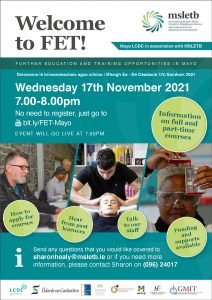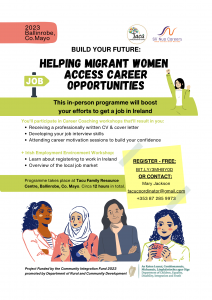By Liam Horan, Career Coach & Managing Director, Sli Nua Careers
Competency-based interviews are becoming more commonplace. They invite the candidate to talk about previous experiences – essentially, to tell stories – from their past and the employers hopes these will act as a reliable guide as to how they will perform in the future.

Tuned-in employers will first of all identify the competencies they wish to assess – and, in many cases, these competencies will be flagged and requested in the application form. The call-to-interview note may also include the list of relevant competencies.
Typical competency-based questions include the following:
Flexibility
- Tell me about a time you altered your work practices to fit in with what was expected of you from your employer.
Customer service
- Give detail on a time when the level of customer service you provided went above and beyond the call of duty.
Communication
- Outline an occasion when you had to deploy advanced communication skills to deal with a challenging situation in work.
Creativity
- Tell me about a time when you had to think creatively to get around a difficult challenge.
Leading teams
- Identify a time when you led a team.
The trick with questions like this is to go beyond the obvious in the answer. To the last question above, for example, the answer ‘I led a team when we resolved a payroll issue at my last workplace’ is not enough.
You must go into much more detail than that. You must tell the story in full. The story should show you in a positive light.
The vehicle for this is the STAR method. S for Situation, T for Task, A for Action and R for Result.
Situation: We found ourselves with a big problem in the payroll department. Basically, for some reason, our software package was creating duplicate entries in certain categories. It was throwing our accounting reports totally out of kilter.
Task: We had to go back over 3000 transactions and see how many of them had fallen victim to this problem.
Action: I organised the team into three groups of two. I instructed Team 1 to generate reports in bundles of ten transactions a time. Team 2 then assessed these bundles for the presence of the problem. I felt by breaking the reports into small bundles, we would be able to work through the problem bit by bit without feeling overwhelmed by the overall scale of the issue. Plus, if we made an error, it would run back only as far as a maximum of ten transactions – whereas if we tackled the 3000 transactions in one go, an error could run back through every transaction right to the very start. I instructed Team 3 to double check what Team 2 had done, to ensure accuracy. I liaised directly with the software providers to find and iron out the glitch.
Result (and this is crucial): We got to the bottom of the problem inside two weeks. The issue was isolated and contained. By that stage, the software providers and I had worked to get rid of the glitch that had caused the problem in the first place, and we are all good to go again.
By using STAR, you are led through a process of giving more detail – and the detail should serve to advance your candidature. Results should be good outcomes and your input should always be significant in the achievement of results.
Liam Horan is a Career Coach with Sli Nua Careers Ltd. You can read more blogs from Sli Nua Careers coaches HERE, and make a booking with Liam for CV Preparation and Interview Training HERE.






